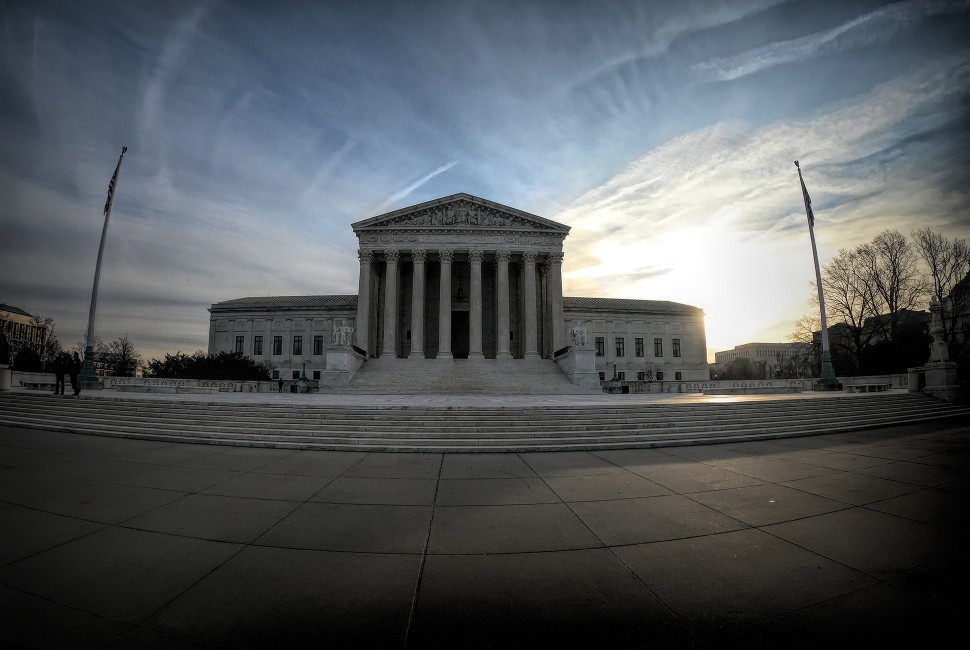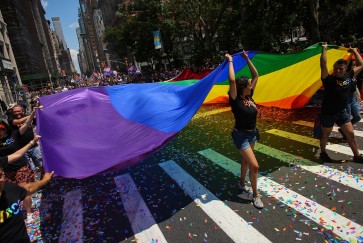As of Oct. 3, the Supreme Court is back in session with a new slate of highly consequential cases on its docket. To better understand what is at stake, Northwestern Now spoke with faculty to learn what cases they are following and what the ramifications are likely to be.
“The new term could be a dismal one for civil rights, with major cases on topics ranging from voting rights to affirmative action up for the Court’s review,” said David Shapiro, a clinical professor of law who also serves as the director of Supreme Court and appellate practice at the MacArthur Justice Center.
Shapiro encourages people who are concerned about the future of civil rights to vote in upcoming state supreme court elections. State courts will increasingly need to “pick up the balls that the U.S. Supreme Court is dropping,” he said.
Affirmative action
In affirmative action cases brought by a group called Students for Fair Admissions against two universities, the plaintiffs are arguing that race-conscious admissions policies — which they claim lead to discrimination against Asian and/or white applicants — are unlawful because they conflict with provisions of the Civil Rights Act and/or the 14th Amendment’s equal protection clause.
“When it hears new challenges to affirmative action this year, my guess is that the Court is finally going to say that racial discrimination by state actors is not permissible, which is going to be a bigger bombshell than the Dobbs decision from last term, both because of the age of the precedents that it will overturn and the way its impact will be felt across society, not just in college admissions,” said Ronald J. Allen, the John Henry Wigmore Professor of Law.
According to Kate Masur, the Board of Visitors Professor of History at the Weinberg College of Arts and Sciences: “The 14th Amendment passed Congress in 1866 and was ratified in 1868. As an historian of Reconstruction, I know that [the plaintiffs’] portrayal of the Amendment’s framers is incorrect, and I helped write an amicus brief that makes that case. The legislators who passed the 14th Amendment adopted a variety of race-conscious policies, including the nation’s first federal civil rights statute, which sought to ensure that citizens of ‘every race or color’ had the same civil rights as ‘white citizens.’ These men knew that white people had heretofore enjoyed legal advantages and sought to remedy that with a race-conscious law that is still part of our federal code.”
How exactly the Court rules will shape changes to the system going forward, according to Anthony Chen, an associate professor of sociology and affiliated faculty member at the Institute for Policy Research.
“I’ll be watching with everyone else to see if the Court throws out affirmative action altogether, or if they strike down the specific programs operated by Harvard and/or UNC because they did not satisfactorily demonstrate that race-neutral alternatives were not workable,” Chen said. “I suppose that it is also conceivable that the Court could choose to define the meaning of a workable, race-neutral alternative in a way that makes it virtually impossible for any school to justify the use of affirmative action going forward.”
Environmental protection
A case before the Court, Sackett v. EPA, could lead to a reinterpretation of the Clean Water Act that might leave millions of acres of wetlands unregulated, according to David Dana, the Kirkland & Ellis Professor of Law and director of Pritzker’s Program on Sustainability and Food and Animal Law.
“In Sackett v. EPA, the Court is circling back to an issue that has been the subject of debate and confusion for decades: What is the outside reach of federal jurisdiction over wetlands?” Dana said. “At stake is federal protection over as much as 50 million acres of undeveloped land. The Court’s conservative majority almost certainly will hold that federal jurisdiction is limited to wetlands that have direct surface connections to navigable waterways. It then will be up to the states to protect the millions of environmentally sensitive acres that no longer will be under federal jurisdiction. Some states may pass laws to do just that, but others almost certainly will allow unconstrained development.”
Voting rights and redistricting
Two cases before the court — Merrill v. Milligan and Moore v. Harper — could have a major impact on the way congressional districts are drawn by limiting protections for minority groups (Merrill) and state supreme court oversight of gerrymandering that benefits one political party (Moore).
“I think both cases are potentially very big decisions,” said Michael Kang, the Class of 1940 Professor of Law. “The Voting Rights Act case [Merrill] has the potential to gut Section 2, the primary remainder of the VRA after the Shelby County decision earlier ended the preclearance provisions. The Court may be poised to bar majority-minority districting, which has been a linchpin of the VRA since the 1980s and helps guarantee some representation for racial minorities. We don’t know exactly what the Court will do in the case, but it carries that sort of transformative possibility.”
Moore v. Harper, Kang said, is actually harder to predict.
“We know the Court will adopt some form of the independent state legislature doctrine because, based on earlier decisions, it looks like there’s a majority for it,” Kang said. “There are stronger and weaker forms of the doctrine we can imagine. Obviously, there’s a lot of attention to this case because, whatever form it takes, it threatens to sideline state courts to some degree in their authority to shape election rules under state law and therefore give state legislatures greater discretion to control elections.”
LGBTQ+ rights
In the case 303 Creative v. Elenis, a Colorado wedding website designer wants to include a provision on her website explaining that she prefers not to design websites for same-sex couples on religious grounds, arguing that doing so would compel her to speak in a way that conflicts with her religious beliefs, in violation of the First Amendment. The Court’s decision could have implications for how businesses treat LGBTQ+ customers.
“The religious claimant will almost certainly win,” wrote Andrew Koppelman, the John Paul Stevens Professor of Law, in a recent Canopy Forum piece. “The question is whether she prevails on appropriately narrow grounds, or whether the Court will balloon the law of free speech into anarchical proportions.”


